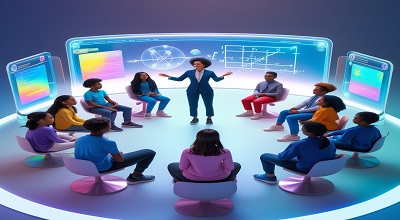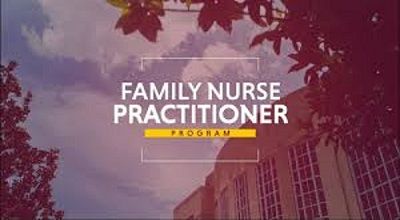Virtual Classrooms
In the rapidly evolving landscape of education, virtual classrooms have emerged as a transformative approach to learning. This blog post delves into the concept of virtual classroom, their significance, and provides examples of how they are being utilized in various educational settings.
What is a Virtual Classroom?
A virtual classroom is an online learning environment that allows instructors and students to interact in real-time. Unlike traditional online courses that may rely on pre-recorded materials, virtual classroom facilitate live discussions, collaborative activities, and immediate feedback. This synchronous setting enhances engagement and fosters a sense of community among participants.
Key Features of Virtual Classrooms
- Live Interaction: Students and teachers can communicate in real-time, allowing for immediate clarification of doubts and dynamic discussions.
- Multimedia Tools: Virtual classroom often incorporate various tools such as digital whiteboards, video conferencing, and file sharing to enhance the learning experience.
- Accessibility: Students can join from anywhere in the world, making education more accessible to diverse populations.
- Engagement Tools: Features like polling, quizzes, and breakout rooms help keep students engaged and facilitate collaborative learning.
Benefits of Virtual Classrooms
1. Flexibility and Convenience
Virtual classroom offer unparalleled flexibility. Students can attend classes from the comfort of their homes, eliminating the need for commuting. This convenience is particularly beneficial for those balancing work, family, and education.
2. Enhanced Learning Experience
With the integration of multimedia tools, virtual classrooms can provide a richer learning experience. Instructors can use videos, interactive presentations, and real-time quizzes to make lessons more engaging.
3. Global Reach
Virtual classrooms break geographical barriers, allowing institutions to reach students worldwide. This global reach fosters diversity and enriches the learning environment.
4. Cost-Effectiveness
By reducing the need for physical infrastructure and resources, virtual classroom can be more cost-effective for educational institutions. This can lead to lower tuition fees for students.
Examples of Virtual Classrooms
Example 1: K-12 Education
Many K-12 schools have adopted virtual classrooms to continue education during disruptions like the COVID-19 pandemic. For instance, platforms like Google Classroom and Zoom have been widely used to facilitate live classes, where teachers can share their screens, conduct polls, and assign homework in real-time.
Example 2: Higher Education
Universities are increasingly utilizing virtual classroom to offer online degrees. Institutions like Harvard and Stanford provide live lectures through platforms such as Canvas and Blackboard, allowing students to participate in discussions and group projects from anywhere in the world.
Example 3: Corporate Training
Companies are leveraging virtual classrooms for employee training and development. Platforms like Webex and Microsoft Teams enable organizations to conduct live training sessions, workshops, and seminars, ensuring that employees receive consistent and effective training regardless of their location.
Example 4: Language Learning
Language schools have embraced virtual classroom to offer immersive language experiences. Programs like Rosetta Stone and Duolingo utilize live sessions with native speakers, allowing students to practice conversational skills in real-time.
Example 5: Skill Development
Online platforms like Coursera and Udemy offer virtual classroom for skill development courses. These platforms provide live sessions with industry experts, enabling learners to gain insights and ask questions directly.
Challenges of Virtual Classrooms
While virtual classrooms offer numerous benefits, they also come with challenges:
1. Technical Issues
Connectivity problems and software glitches can disrupt the learning experience. Institutions must ensure that both instructors and students have access to reliable technology.
2. Engagement
Maintaining student engagement in a virtual setting can be challenging. Instructors need to employ various strategies to keep students motivated and involved.
3. Assessment
Assessing student performance in a virtual environment can be complex. Educators must develop innovative assessment methods that accurately reflect student learning.
Future of Virtual Classrooms
The future of virtual classrooms looks promising, with advancements in technology paving the way for more interactive and immersive learning experiences. Innovations such as virtual reality (VR) and augmented reality (AR) are expected to play a significant role in enhancing virtual education.
Conclusion
Virtual classrooms represent a significant shift in the educational landscape, offering flexibility, accessibility, and a rich learning experience. As technology continues to evolve, the potential for virtual classroom to transform education is limitless.
FAQs
1. What technology is required for a virtual classroom?
To participate in a virtual classroom, students typically need a computer or tablet, a stable internet connection, and software such as Zoom, Google Classroom, or Microsoft Teams.
2. Are virtual classrooms effective for learning?
Yes, virtual classrooms can be highly effective, especially when they incorporate interactive tools and foster real-time engagement between instructors and students.
3. How do teachers assess students in virtual classroom?
Teachers can use various methods for assessment, including online quizzes, assignments, and participation in discussions. Some may also use video presentations or projects to evaluate student understanding.
4. Can virtual classrooms accommodate students with disabilities?
Many virtual classroom platforms offer features that support students with disabilities, such as screen readers, captioning, and customizable interfaces to enhance accessibility.
5. What are the best practices for teaching in a virtual classroom?
Best practices include maintaining clear communication, using engaging multimedia tools, encouraging participation, and providing timely feedback to students.





